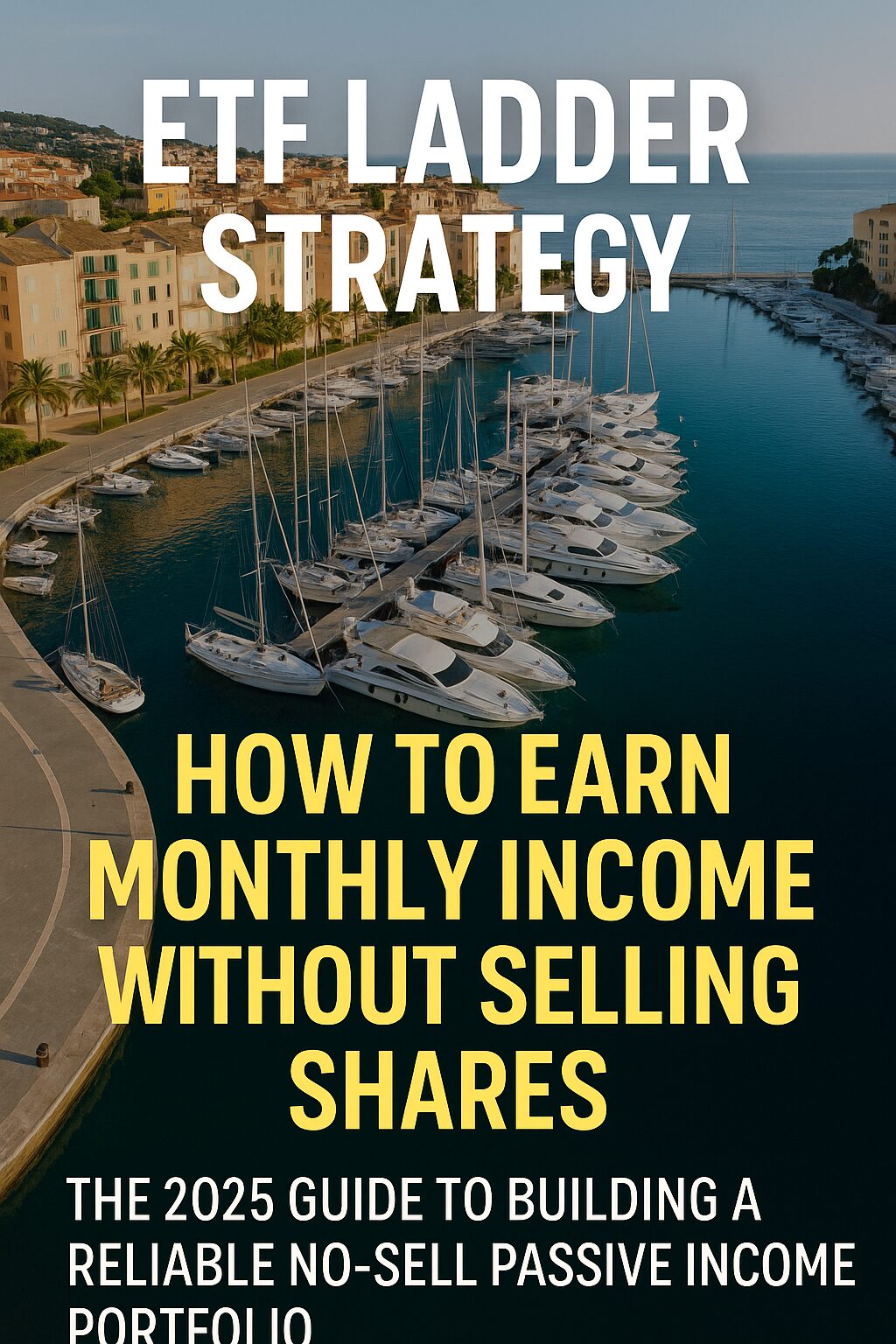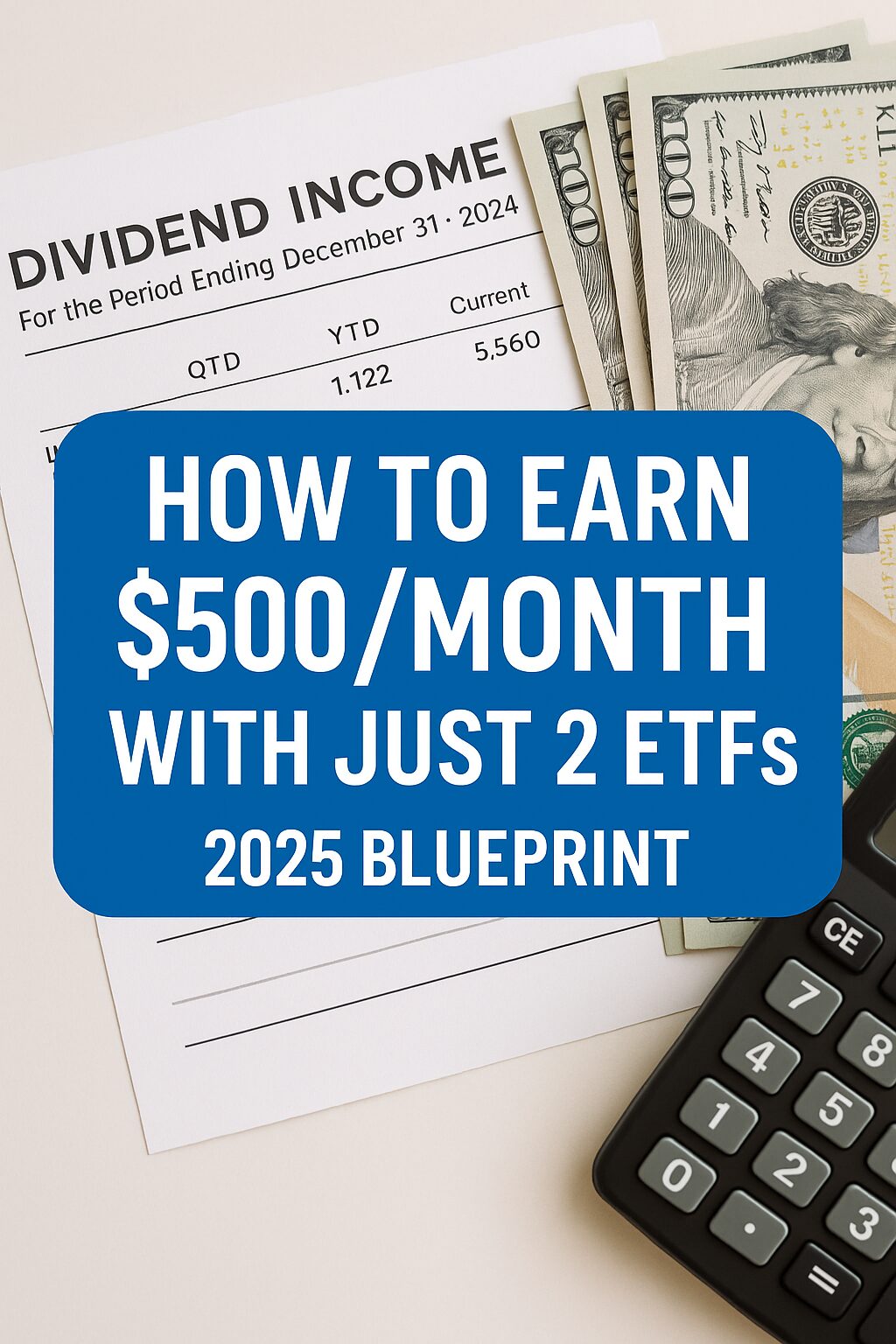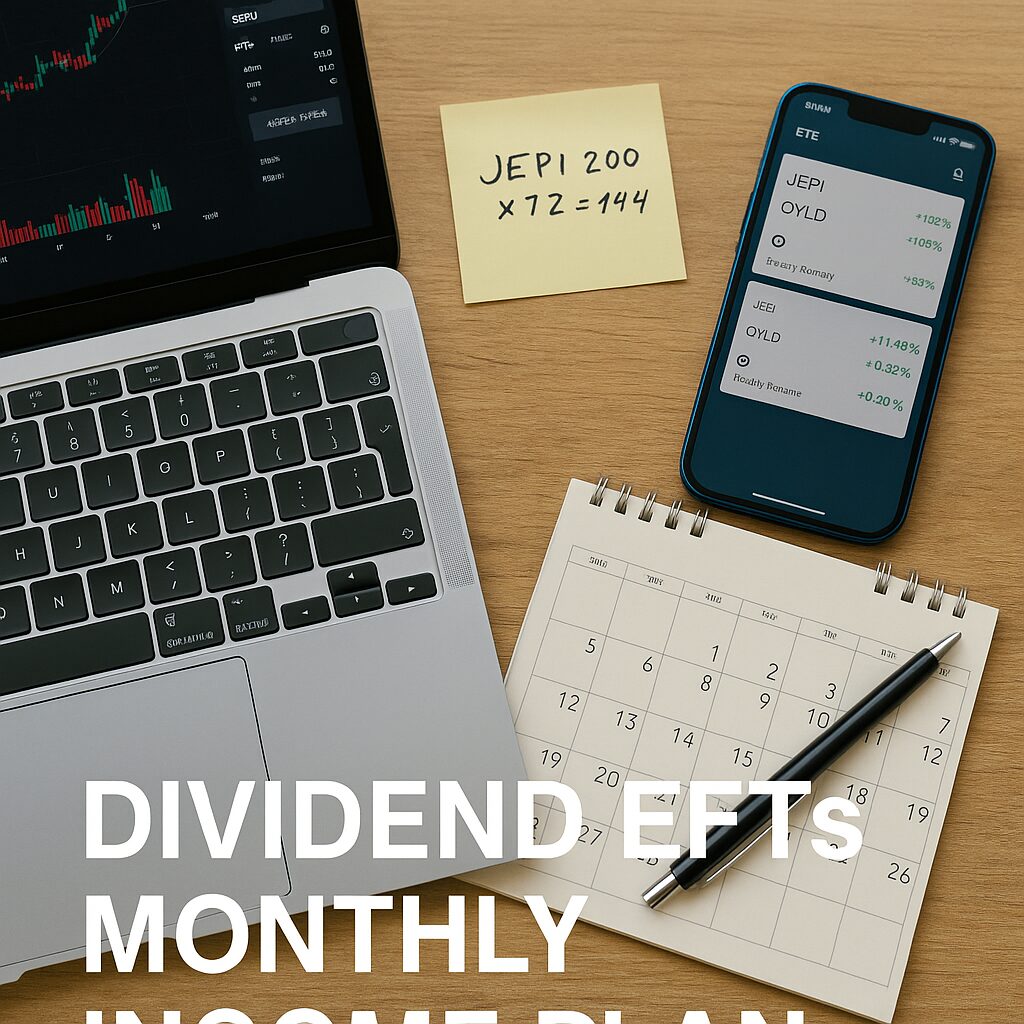Introduction: Monthly Income Without Selling — Is It Really Possible?
Imagine receiving consistent income every single month—without selling a single share of your portfolio. No trading, no market timing, no capital drain. Just reliable, automated cash flow.
In 2025, this is not only possible, it’s practical. Through a smart technique called the ETF Ladder Strategy, you can structure your dividend portfolio to provide monthly passive income that grows over time and never requires liquidation.
This guide walks you through everything you need to know:
- What the ETF ladder strategy is
- How to choose the right ETFs
- How to structure them for monthly payouts
- Realistic income projections
- Tax implications
- And how to manage this plan long-term
1. What Is the ETF Ladder Strategy?
The ETF Ladder Strategy is a method where you combine several dividend-paying ETFs with different distribution schedules to create a consistent monthly income stream—like rungs on a ladder.
You don’t rely on just one ETF or fund to pay you every month.
Instead, you assemble a portfolio where at least one ETF pays out in each calendar month. The result is a 12-month dividend stream with no need to sell any shares.
Think of it like this:
| Month | Payer |
|---|---|
| Jan | ETF A |
| Feb | ETF B |
| Mar | ETF C |
| Apr | ETF A |
| May | ETF B |
| … | … |
The key is to strategically select ETFs with staggered payment schedules.
2. Why Use an ETF Ladder Instead of a Single Fund?
Most investors rely on one or two dividend funds and accept quarterly payments. But this creates income gaps and cash flow timing issues.
The ETF ladder offers:
- Monthly cash flow, matching real-world expenses
- No need to touch principal (ideal for retirement)
- Diversified income sources (lower risk)
- Flexible asset allocation (growth + income)
And most importantly, you build a recession-resistant, tax-efficient income system.
3. Understanding ETF Dividend Schedules
Most ETFs pay dividends either:
- Monthly
- Quarterly
- Semi-annually
Some well-known ETFs and their payout schedules (as of 2025):
| ETF | Name | Payout Frequency |
|---|---|---|
| JEPI | JPMorgan Equity Premium Income | Monthly |
| SCHD | Schwab Dividend Equity ETF | Quarterly (Mar, Jun, Sep, Dec) |
| DIVO | Amplify CWP Enhanced Dividend Income | Monthly |
| VYM | Vanguard High Dividend Yield | Quarterly |
| QYLD | Global X Nasdaq 100 Covered Call | Monthly |
| PFFD | Global X Preferred ETF | Monthly |
The trick? Combine monthly + quarterly ETFs so that something pays out every month.
4. Step-by-Step: How to Build Your ETF Income Ladder
Step 1: Select 3–6 High-Quality ETFs
Start with a mix of:
- 2–3 monthly payers (e.g., JEPI, QYLD, DIVO)
- 2–3 quarterly payers staggered throughout the year (e.g., SCHD, VYM, DGRO)
Step 2: Map Out the Payout Calendar
Build a simple spreadsheet with each ETF’s distribution months.
Step 3: Allocate Capital Strategically
Balance:
- High yield (e.g., JEPI, QYLD): for income now
- Dividend growth (e.g., SCHD, DGRO): for rising income later
Step 4: Rebalance Semiannually
Review performance, dividend yield, and payout shifts every 6–12 months.
5. Example Portfolio: Monthly Payout Model
| ETF | Yield (2025) | Frequency | Allocation |
|---|---|---|---|
| JEPI | ~7.0% | Monthly | 30% |
| SCHD | ~3.5% | Quarterly | 25% |
| DIVO | ~5.0% | Monthly | 15% |
| QYLD | ~12% | Monthly | 10% |
| DGRO | ~2.5% | Quarterly | 10% |
| PFFD | ~6.0% | Monthly | 10% |
Blended Yield: ~5.8%
Payout Coverage: 12 months/year
6. How Much Do You Need to Make $1,000/Month?
Scenario 1 – Balanced Portfolio (Yield ~5.8%)
- Target Income: $12,000/year = $1,000/month
- Required Capital: $207,000
Scenario 2 – High-Yield Tilt (Yield ~6.5%)
- More JEPI, QYLD, PFFD
- Required Capital: $185,000
Scenario 3 – Conservative Growth Tilt (Yield ~4.5%)
- More SCHD, DGRO
- Required Capital: $265,000
7. Can You Reinvest and Still Build Income?
Absolutely. If you don’t need the income today, reinvest:
- JEPI + QYLD monthly reinvestment can snowball over time
- SCHD’s dividend increases create long-term income growth
Reinvesting just for 3–5 years can turn $1,000/month into $1,500–$2,000/month—without new capital.
8. Tax Considerations
U.S. Investors
- Qualified dividends (SCHD, DGRO): taxed at 15% or 0%
- Ordinary dividends (QYLD, JEPI options income): taxed at full rate
- Use Roth IRA for high-yield ETFs
- Hold qualified dividend ETFs in taxable accounts
International Investors
- Consider Ireland-domiciled ETFs (e.g., IUSA, IDVY)
- Use tax shelters like TFSA (Canada), ISA (UK), Super (Australia)
- Avoid U.S. ETFs if no tax treaty (30% withholding applies)
9. Real Case Study: Retiree Using ETF Ladder
Name: Mark, Age 58, Ex-engineer
Goal: $2,000/month in passive income
Strategy:
- $500K portfolio
- ETF ladder of JEPI, SCHD, QYLD, PFFD, DGRO
- Reinvested for 3 years
- Now fully retired, lives on dividend ladder without selling shares
“I haven’t sold a single ETF in 4 years. I just collect and live. It’s boring—but it works.”
10. Long-Term Management Tips
- Reinvest early, withdraw later
- Don’t chase ultra-high yields
- Use tax shelters strategically
- Monitor ETF schedule changes annually
- Avoid overconcentration in one sector (e.g., tech-heavy QYLD)
Conclusion: You Don’t Need to Sell. Just Structure Smarter.
ETF ladders aren’t a fantasy—they’re a structure.
They give you:
- Consistency
- Simplicity
- Scalability
- Peace of mind
And unlike trading or real estate, you don’t need to hustle to earn.
If you can build a 12-month dividend ladder that pays you every single month…
You’ve already retired—whether you quit your job or not.



